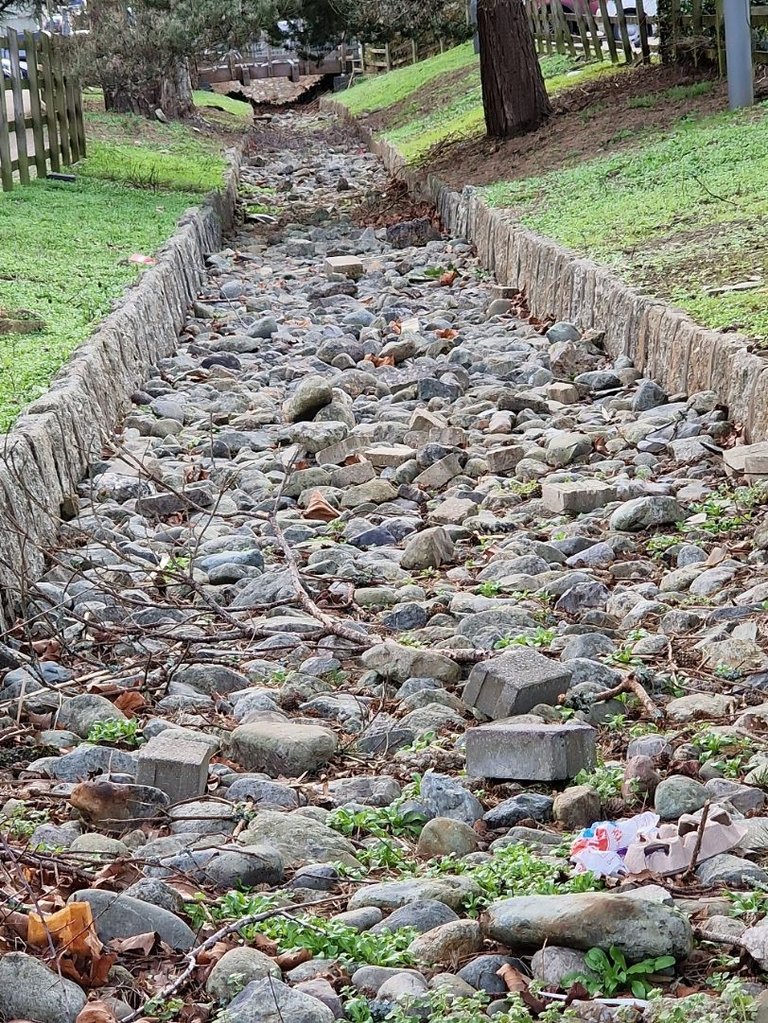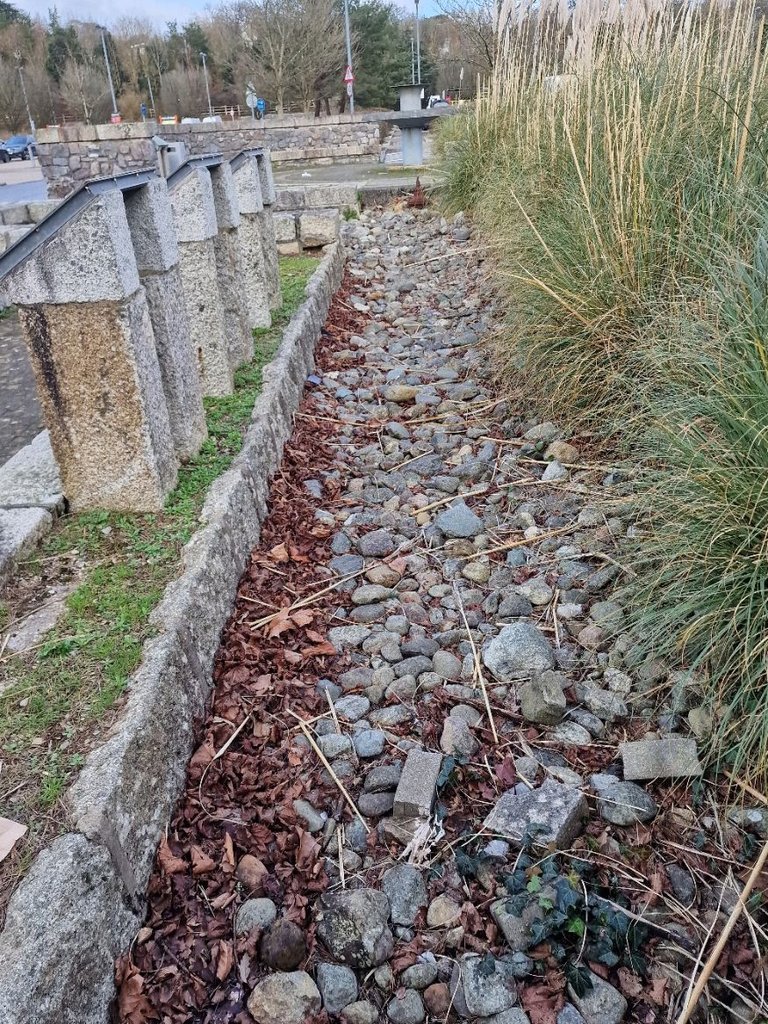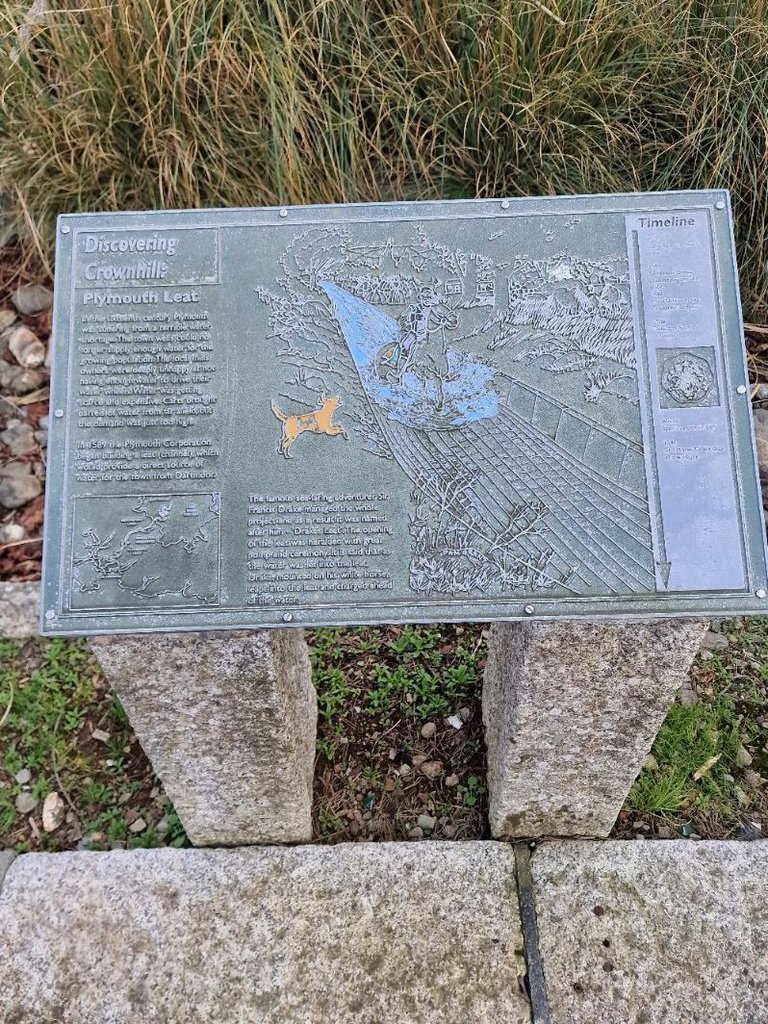
The picture above is a small portion of what remains of Drake's Leat. This was a manufactured watercourse which brought water from Dartmoor down to the growing city of Plymouth - from where the Mayflower would finally leave British shores in 1620.
Originally put forward as an idea in 1560, the leat was finally built by a hardworking team of about thirty-five men between December 1590 and April 1591.
The leat ran for about seventeen-and-a-half winding miles and was designed to maintain the downwards gradient from moor to sea-level, but to do so in a way that would not scour out the waterway with a swift-flowing stream of water.
This was a prodigious piece of construction work. In less than five months a length of 92,400 feet was dug to a depth averaging about 2 feet and a width of 6 feet. That's six-hundred-and-sixty feet per day dug by hand during the coldest and wettest part of the year. Not only dug, but formed into a channel which, in some places was lined with stone.
Sir Francis Drake's name is bound with the leat as he had been instrumental in the committee which led to the act of parliament that authorised construction. He was there in December to ceremonialy turn the first spade of earth as construction started and, according to one legend, rode a horse down the leat ahead of the first waters on the April.
What is less legendary is Drake's insertion into the authorising act permission for mills to be built along the waterway. He built several and while water did arrive in the city the manifold purposes originally suggested failed to materialise and powering the mills was, for many years, the most productive activity the water provided.
Today little of the leat remains. The upper third disappeared beneath the water of Burrator Resevoir in the late nineteenth century and other parts have been lost to the cities growth.
The section pictured here is tucked away in Crownhill Retail Park and is surrounded by a Tim Hortons, KFC, Marks & Spencers Simply Food, and B&Q.
I doubt one in a thousand visitors know it is there. I'd been in the area for maybe seven years, and been a frequent visitor to the B&Q diy store, before reading about it in a local newspaper. A salient reminder to be aware of the history which surrounds us.


A final note is on the word leat. it was not one I'd heard of until reading about this.
The Collins dictionary records the definition as 'a trench or ditch that conveys water to a mill wheel.' This derives from an old English word for waterway.
I can't help but wonder if the definition expanded due to folks like Drake building them specifically to power mills, instead of remaining a more general term.
text and pictures by stuartcturnbull